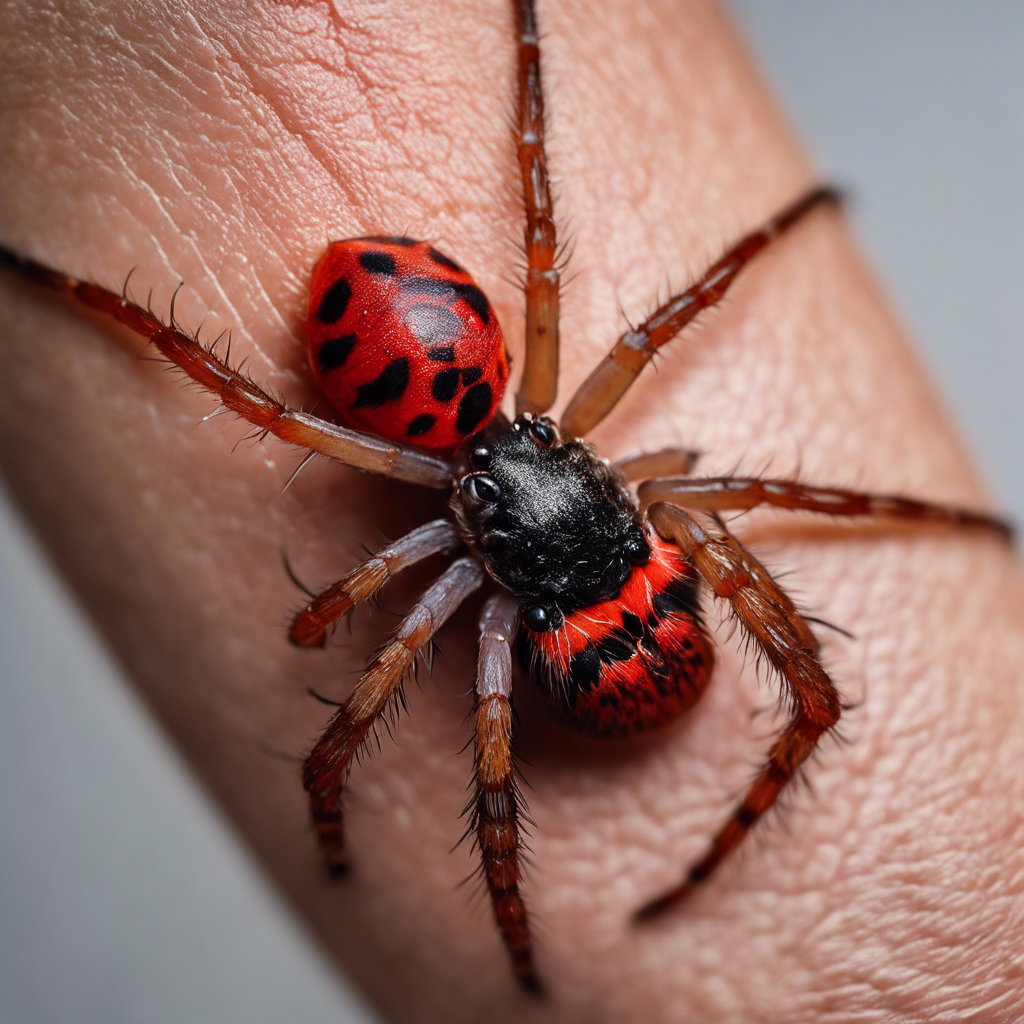St. George Pest Control is a trusted provider specializing in the identification and treatment of spider bites. Spider bites can result in various symptoms, such as redness, swelling, pain, and itching. In certain cases, more severe reactions or allergic responses may occur.
With a team of trained professionals, St. George Pest Control can accurately identify the specific spider species responsible for the bite and offer suitable treatment options. They also provide preventative measures to minimize the risk of future spider bites.
By prioritizing the safety and well-being of their customers, St. George Pest Control ensures efficient and reliable management of spider bites.
Key Takeaways
- Prompt medical attention is advised if symptoms of a spider bite, such as redness, swelling, and pain, are present.
- It is important to identify venomous spiders, such as black widows and brown recluses, by their distinct markings to ensure appropriate treatment.
- First aid for spider bites includes cleaning the bite area, applying a cold compress, and seeking medical attention for severe allergic reactions.
- Non-venomous spider bites can be treated at home by cleaning the bite area, using cold compresses and over-the-counter medications, and seeking medical attention if symptoms persist or worsen.
Common Spider Bite Symptoms
One of the most common spider bite symptoms is the presence of redness, swelling, and pain at the bite site. These symptoms typically occur shortly after the bite and can vary in severity depending on the type of spider and the individual’s reaction to the venom.
In addition to redness, swelling, and pain, some individuals may also experience itching or a rash around the bite area. It is important to note that not all spider bites cause these symptoms, and some bites may be painless or go unnoticed.
However, if these common spider bite symptoms are present, it is advisable to seek medical attention, as they may indicate a more serious reaction or an infection. Prompt evaluation and treatment by a medical professional can help prevent complications and promote healing.
Identifying Venomous Spiders
To identify venomous spiders, it is important to recognize specific physical characteristics and markings unique to each species.
One such spider is the black widow. Black widows are venomous and can be identified by their glossy black color and the red hourglass marking on their abdomen.
Another venomous spider is the brown recluse. These medium-sized spiders can be recognized by the violin-shaped markings on their back.
Brown widow spiders are also venomous and can be identified by their brown color and distinct markings on the abdomen.
On the other hand, daddy long legs spiders, or harvestmen, are not venomous. They are recognizable by their long legs and rounded body.
Lastly, fishing spiders are large and aquatic, known for their unique ability to hunt on the water’s surface.
First Aid for Spider Bites
When faced with a spider bite, prompt and proper first aid is essential in mitigating potential complications and promoting healing. The first step is to clean the bite area with soap and water to prevent infection. This helps remove any bacteria or dirt that may have been introduced by the spider’s fangs.
After cleaning, applying a cold compress or ice pack to the bite site can help reduce swelling and alleviate pain. Elevating the affected limb, if possible, can also minimize swelling and the spread of venom through the body.
It is crucial to seek immediate medical attention if the individual shows signs of a severe allergic reaction, such as difficulty breathing or a rapid heartbeat. Remaining calm and still can slow the spread of venom and minimize the effects of the bite.
Treating Non-Venomous Spider Bites
After properly administering first aid for spider bites, the next step is to address the treatment of non-venomous spider bites. In the case of non-venomous spider bites, basic first aid measures can be effective in alleviating symptoms.
Cleaning the bite area with soap and water is essential to prevent infection. Applying a cold compress to the affected area can help reduce swelling and alleviate pain. Over-the-counter antihistamines or anti-inflammatory medications can be used to address itching and inflammation caused by non-venomous spider bites.
Elevating the affected limb can assist in reducing swelling and discomfort. However, if there are signs of infection or if symptoms persist or worsen after treating non-venomous spider bites at home, it is recommended to seek medical attention.
Proper treatment and care are essential to ensure a prompt recovery from non-venomous spider bites.
Seeking Professional Medical Help
It is imperative to consult a healthcare professional for proper assessment and treatment of spider bites. When it comes to pest control, it is crucial to seek professional medical help, especially if you experience severe symptoms such as difficulty breathing, chest pain, or severe swelling after a spider bite.
Prompt medical attention is essential if you suspect you’ve been bitten by a venomous spider. A medical professional can accurately diagnose the type of spider bite and provide suitable medical care based on the severity of the symptoms. They are equipped to handle spider bites caused by potentially dangerous species, ensuring the appropriate treatment is administered.
In cases of severe reactions or uncertainty about the spider species, consulting with a healthcare professional is crucial to ensure proper assessment and treatment.
Frequently Asked Questions
How Much Does Pest Control Charge for Spider Treatment?
The cost of spider treatment varies based on factors such as property size, infestation severity, and spider species. Pest control companies offer different packages, ranging from one-time treatments to ongoing preventative plans. Prices may also depend on the methods used, such as chemical sprays or traps.
How Do You Tell if a Bite Is From a Spider?
Spider bite symptoms can vary depending on the species, but common signs include redness, swelling, pain, and itching at the bite site. Some bites may also develop a blister or ulcer. If symptoms worsen or persist, medical attention should be sought.
Can Pest Control Help With Spiders?
Yes, professional pest control services can help with spider prevention by identifying spider habitats, implementing targeted treatments, and addressing potential entry points. This can reduce spider populations and minimize their presence in and around homes and other structures.
What Do Doctors Prescribe for Spider Bites?
Doctors may prescribe antihistamines, pain relievers, antibiotics, corticosteroids, or antivenom for spider bites. These treatments aim to reduce itching, swelling, pain, inflammation, allergic reactions, and counteract the effects of venom in severe cases.




